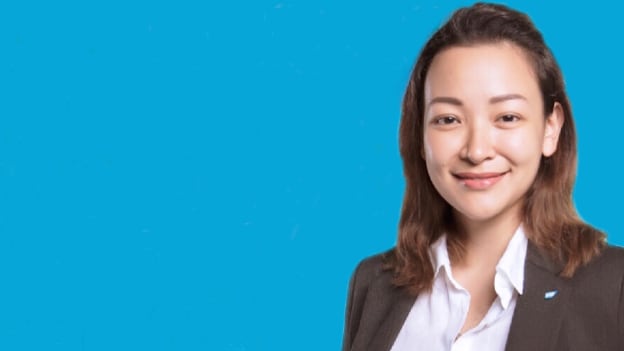Success is measured by how well we serve our customers- Kathleen Muller

Head of SAP, Mid- Market, ASEAN, Kathleen Muller is leading and managing digital, multi-functional, multi-cultural, and regional teams for SAP. Kathleen’s provenance into SAP was leading the Philippines’ Channel business, followed by cumulatively fulfilling the Senior Sales Director role to take a full circle, the market’s Small, Medium and Large enterprise digital transformation strategy.
In a conversation with People Matters, she shared her thoughts on leading in times of crisis, what new experience she is planning to add in her LinkedIn profile, and some cool productivity hacks. Read the excerpts here-
What are some of the leadership lessons that have guided you in the current times of crisis? Who is the one leader who you consider inspiration in a firefighting crisis?
There are three foundational leadership lessons that guide me in times of crisis.
First, communicate with empathy, clarity, and connectedness. This aims to build trust.
Second, establish a simple, predictable, interconnected rhythm for those in your charge. This induces stability.
Third, engage others through common, human themes during the crisis. This establishes compassion and nurtures hope.
For inspiration in this unprecedented time, I look to all leaders. We are all on different paths and varying stages of understanding how we can best support our employees through this crisis.
In this time of crisis, what has worked for you and what hasn’t? As a leader, what is keeping you awake at night?
An extensive community of leaders and teams continue to work tirelessly to ensure that our employees are safe, engaged, and have access to tools and resources to ease the transition to digital working environments.
For my part, I take care of my charges emotionally and mentally by meeting them virtually. By asking relevant and compelling questions I help them break down an overwhelming flight of stairs into single steps.
Doing this at home and at work creates safe spaces where family, loved ones, team members, peers, and my fellow leaders can express thoughts and emotions without judgment or receiving unsolicited advice. Understanding each member of the team as an individual helps me create remote working environments which are relevant to each team member, especially those who find it difficult to transition into working from home.
There are many things that could keep us awake at night, but what motivates me to sleep well are my responsibilities to my children, loved ones, and my team, as they deserve a well-rested Kathleen who is ready to run at her best every day.
Do you see your role as more of a big-picture strategist or a hands-on manager?
I must be both. My success and that of the company is measured by how well we apply our finite resources to serve our customers. You have to have both an eye on the big picture while being prepared to go down into the trenches and be hands-on.
Especially in today’s economic and environmental climate, alongside an extensive community of leaders and managers, we work closely in providing an engaging working rhythm, relevant resources, and most importantly, a deeply human experience. This is in order that each of our colleagues may focus on their transition into a more digital working environment, redefining success where they see fit, and moving forward with their newfound reality.
In practice that means helping each of them transition into working digitally, course-correcting where required, and moving forward. For my team, this goes beyond managing and creating a deeply human experience.
As a leader, do you measure performance during the crisis? If yes, what are the key parameters that are considered while measuring performance?
Let’s focus on sustainable outcomes.
The desired outcome is for employees to stay engaged and resilient throughout the crisis and foreseeable changes.
A simple, predictable, and inter-connected rhythm helps the team be effective. Of course, time is allocated to work, but also to learning, time away from screens, and even suggested wellness activities (our one-minute plank challenge became a company-wide phenomenon, and videos posted by staff gathered more than 70,000 views). These are activities we incorporate into work time.
Our customers and business partners are experiencing the same transitions. We encourage them to shore up productivity through a focus on well-being, not the “work hard, then play hard” mentality prevalent before.
What is that one job that is going to be critical at your group in the future? And why?
Let’s dig deeper into the essence of your question by asking, “What life skills may be most critical to our future and the sustainability of the talent economy?”.
Thinking of the world’s response to the pandemic and subsequent country lockdowns, major transitions compel us to stretch our ability to think critically, embrace abstract thought processes, to value and leverage data for more informed decision-making, prioritize more deliberately, and dynamically manage time based on the “big rocks” (referring to “First Things First” by Stephen Covey). Now, underpinning these and many other skills may be the one most valuable to redefining our next reality: our ability to lead.
For how we lead ourselves and those closest to us towards life-giving habits, through fear and uncertainty, may well define how we lead others beyond the confines of management roles.
There is a debate on the impact of working from home on employee productivity and performance. What is your take on this? What has been the trend in your recent experience of having the entire workforce working remotely?
We can only truly give what we have.
The privilege of fulfilling regional roles taught me that what really counts is an environment that brings out our collective best. That can be virtual when working from home, or in-person in the office. Creating safe spaces demonstrates you care for your staff.
Think about what brings out the best in you. Chances are it is more about an environment that allows for space to rest, renew and learn, which may be both at the office and at home.
It might be worthwhile talking about that in your next conversation with your manager.
You are leading SAP in multiple countries in ASEAN. How do you make sure that the culture is cohesive all across?
The team I am responsible for operates in six of the ten countries in ASEAN. The cultural differences are certainly wide and varied, but common to all are the three Ps: predictability, participation and performance.
To create predictability, we plan a weekly rhythm for the next four weeks. Most people need time to plan ahead and wrap their heads around how they are able to execute well. Everyone is asked to discuss how we define successful. That’s where we ignite participation.
Lastly, we hold each other to account to build positive habits and inspire our performance as a team.
My job is to build psychological safe spaces for those in my care so they can be their best selves. Together we create a cohesive environment that inspires them to want to do better than they did yesterday.
What changes have you brought in your daily routine to stay positive and productive during the lockdown? What is your one productivity hack?
I’m wondering about adding “home schooling tutor” to my LinkedIn profile. Thoughts?
My three amazing children, who put up with their crazy mother, have had to experience my inexperience in tutoring 16, 12 and 6-year-olds. That’s at the top of the list for changes to my daily routine.
My Productivity Hacks
Appreciate.
Acknowledgment matters more now than it may have before.
We have an “Appreciation” platform that encourages recognition and appreciation across our global employee community.
Schedule Blocks of time in the calendar.
Yes, including breaks, exercise, and time away from your screen.
The Value of “No”.
It’s okay to politely decline the next call and respond over e-mail instead.
Accountability Buddies.
Invite people on your team to help hold you accountable for your well-being and commitments.
For example, I depend heavily on Gulab, my Head of Marketing- Mid Market to keep me sharp and on my toes for the digital campaigns we launch for our team and our customers.















